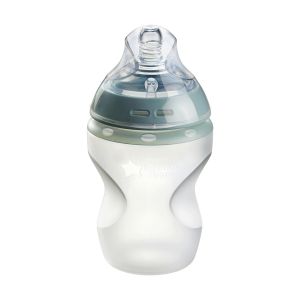
This is a demo store. No orders will be fulfilled.
Subscription orders can be cancelled at anytime. Standard delivery will be charged on each subscription order. Find out more about subscriptions.
They’re easy and fuss free
Your products are automatically sent to you
You save when you sign up for a subscription
You can cancel at any time
We all know that breasts naturally come in different shapes and sizes. If you're someone with larger boobs, you may find breastfeeding tricky for a number of reasons, and you're not alone!
It's a common misconception that if you have bigger boobs, breastfeeding will come naturally and you won't have any milk supply issues. Often this isn't the case! Everyone's breastfeeding journey is unique, and there are some specific challenges that people with big boobs face.
If you're worried about breastfeeding your baby or struggling with it, read on for some top tips and advice on breastfeeding with larger boobs.
People with large breasts often encounter some unique issues when breastfeeding, these can include:
In addition to the above, breastfeeding with big boobs can still throw up the same issues affecting other breastfeeding parents.
These can include...
For those with large boobs, some breastfeeding positions may be easier and more comfortable than others.
These include...
Side lying: Lying down on your side, this is a popular position with those who've had a C-section or have larger breasts. It takes the weight off the breast (or stomach) and it's easier to get your breasts to your baby's level. It's also easier on your back and shoulders since you're not hunched over.
Football, rugby, or clutch hold: In this position, your baby is supported at the side of your body (like how a football or rugby player carries a ball). If you're feeding from the right boob, hold your baby level, facing up, at your right side. Then, put their head near your right nipple and support their back and legs under your right arm. Gently hold the base of their head with your right palm - popping a cushion underneath your right arm can help support their weight. To protect your back, don't lean down to your baby, bring them to you instead. Reverse this process for your left boob.
Laid-back breastfeeding or biological nurturing: A position that encourages a baby-led latch, laid-back breastfeeding requires a reclined position and baby opens their mouth wide to latch themselves onto the breast. Leaning back allows your breast tissue to flatten away from baby's nose. Your neck, back, and shoulders are also well-supported in this position, meaning your body gets a much-needed break!
C-Hold: Another thing that can help you breastfeed with larger boobs is the C-hold. This technique supports your breast and aims your nipple toward baby's mouth, making latching on easier.
In addition to finding the right position to breastfeed, you can also try:
No, this is a common breastfeeding myth! The size of your boobs, large or small, doesn't influence their milk-making abilities. In truth, people with large breasts can still suffer from both under and overproduction of milk.
Your boobs are made up of fatty tissue, glandular tissue, and connective tissue. The size of your breasts reflects how much fatty tissue there is, and it's actually the glandular tissue in your breasts which makes milk.
For some, breastfeeding is easy from the start. For others, it takes a little more time and effort to get the hang of - regardless of breast size!
If you're worried about your breastmilk supply, make sure you reach out to a medical professional like your midwife, health visitor or a lactation consultant for support.
If you are wanting to increase your milk supply, there are a few things you can try.
If you're struggling to breastfeed your baby, don't be afraid to ask for help and advice. Lactation consultants, breastfeeding support groups, other parents, and local resources can all offer support on your breastfeeding journey.